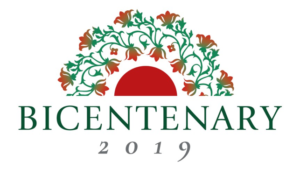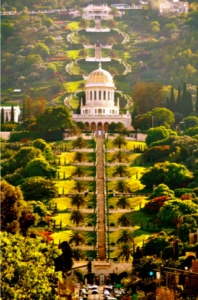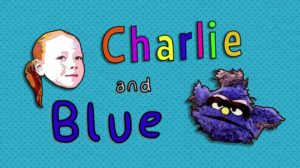An investigation into the links between the Exodus and the Pesach meal celebrated by Jews today.
For pupils with special needs achieving at ‘P Levels’ 1-8). Originally written by Tina Ward, updated in April 2019.
Learning Outcomes
Emerging
- Use the name ‘Moses’ and ‘Jews’ or ‘Judaism’ correctly when talking or writing
- Explain three events which you think are important from the story of Moses
Expected
- Use three words to describe what qualities a good leader should have and explain why
- Explain, with reference to the story of Moses and the Exodus, why Moses showed good leadership
- Explain, with reference to either sensory items of symbols, three aspects of the story of the Exodus
Exceeding
- Give three reasons why Jews today remember Moses and the Exodus
- Show understanding of links between the slavery in Egypt and ways people feel trapped today
Key words and concepts
Moses: The most important prophet in Judaism. According to the Hebrew Bible, Moses brought the Law, including the Ten Commandments, from G-d to the Hebrew / Jewish people and led them from slavery in Egypt to the ‘Promised Land’ of Canaan. He is traditionally considered to be the author of the Torah – the first five books of the Bible.
Aaron: The older brother of Moses, regarded as a priest and prophet of the Israelites. Aaron was known as an eloquent speaker; he became the spokesman for Moses when demanding the release of the Israelites from slavery in Egypt.
Pharaoh: title for the rulers of Egypt in biblical times. The name of the pharaoh at the time of Moses is not given in the Bible.
Slaves: According to the Bible, the ‘children of Israel’, also known as ‘Hebrews’, were forced to become slaves to the Egyptian rulers. The descendants of Jacob, who had settled in Egypt after Joseph had become chief minister there, had grown in population and were seen as a threat by the Pharaoh.
Israelites: those descended from Jacob (also known as ‘Israel’), that is, from the twelve ‘tribes’ descended from the twelve sons of Jacob.
Ten Plagues of Egypt: According to the Biblical book of Exodus, Israel’s G-d, (Yahweh) inflicted ten calamities on Egypt as signs that the Pharaoh should release the Israelites from slavery. He finally gave in after the tenth plague, where all the first-born sons of the Egyptians suddenly died one night. At this point the Hebrew people / Israelites began their Exodus.
Passover: Commemoration of the last of the Ten Plagues. According to the biblical narrative, the angel of death ‘passed over’ the houses of the Israelites, and took the life of each of the Egyptian’s first-born sons. Before this final plague, G-d had told Moses to inform all the Israelites to mark their doorposts with lamb’s blood so that the ‘destroyer’ would not visit their dwellings.
Exodus: The name given to the escape of the Israelites / Hebrews from Egypt.
This planning uses the idea of ‘burning core ideas’ (developed by Anne Krisman) to express the key subject knowledge to communicate to pupils. Here are some burning core ideas:
Moses is special to Jews because he led the people out of slavery to the Promised Land;
Judaism is the name of the Jewish religion;
Jews believe in one G-d and do not usually use His Name. They sometimes write G-d to avoid using the name in a bad way;
The Jewish holy book is called the Tenakh (Bible);
At the time of Moses the Jews were known as Hebrews (descendants of Eber – an ancestor of Abraham) or Israelites (see above). The Jews spoke the Hebrew language.
Here are the further key ideas and knowledge contained in this resource to help you prepare for the teaching and learning activities:
Moses was trusted by people – they followed him out of slavery in Egypt;
Moses inspired the people to follow him – he brought messages from G-d;
Moses led the people; he was their leader. He acted with conviction. With the help of G-d, he found a way through the Red Sea to escape from the Egyptians. Sometimes he was angry with the people when they did not do what G-d wanted;
Moses had many qualities. He could be angry but at times he was caring, kind, fearless, committed, truthful, patient and fair. He trusted G-d;
Moses had a vision of a better future for the Israelites.
Learning activities
This planning resource follows the ’5 Keys to RE’ developed by Anne Krisman.
1. Connection – How can we link our theme of Moses and the Exodus with pupils’ lives?
Let pupils know that Moses inspired his people to escape from slavery and risk everything for freedom and self determination. What inspires us to live a good life and helps us to be free?
Explain to the pupils that they are going to be learning about leadership and what makes a good leader who is worth trusting and following. One way in to the topic is to tell pupils about how one person can start a craze that everyone eventually joins in with. In this way, videos uploaded to YouTube get seen by millions of people, e.g. ‘Gangnam-style’, ‘Harlem Shake’ etc. There are also YouTube clips about one person starting a crazy ‘dance party’ at a music festival, e.g., see the one at the Sasquatch Festival 2009.
Ask the pupils to talk to a partner: in what ways is the first person to start a craze a leader? Is it more important that someone joins in and encourages others? Why do pupils think that other people want to join in some crazes? Why do some people NOT join in?
What are some of the names of a leader? Can pupils think, e.g, of ‘teacher’, ‘captain’, ‘ruler’, ‘president’, ‘governor’, champion’, master’, ‘expert’, ‘director’?
Get some feedback and then ask them in pairs again to think of different leaders, e.g., work, school, community, sport, society etc. and to talk about what each one does to fulfil his / her role. What makes a good leader?
Put a picture of a leader known to the class, such as the Headteacher (?!) or a manager of a football team, or the person who leads a school club or music group, up on the board. Ask the pupils to say what they think this person does in their job and how necessary the job is. How do they think the leader got to their position? Does the leader have close supporters? What qualities might they have? Can the leader do whatever they like or do they have their own rules to follow? Do they have any responsibilities relating to religion and belief? How has this person influenced them? Note some key words from the pupils’ ideas as a class list.
Make some of the key words about leadership in their answers [help pupils with some of these: ‘hard work’, ‘confident’, ‘brave’, ‘inspiring’, ‘unselfish’, ‘caring’, ‘honest’, ‘strong’, ‘thoughtful’, ‘wise’, ‘good listener’, ‘generous’, ‘passionate’, ‘positive’, ‘resilient’, ‘responsible’, helps others’] into a musical performance: signing, clapping, drumming, use of other percussion instruments, or chanting some of the words in different patterns and volumes, so, e.g., small groups could select three words or phrases to repeat with clapping rhythms, starting softly and getting louder then softer again. You could take the lead in the performance, to model each part to be played by the groups.
An alternative or extension activity is for pupils to think of the characteristics of a ‘bad’ leader, e.g. ‘bossy’, ‘cruel’, ‘demanding’, ‘overbearing’, ‘ordering’, and to create a musical performance as above.
Ask the pupils in pairs or small groups to decorate a poster about this leader or another of the pupils’ choice, helping them where needed with words about their role, style of leadership and their impact as a leader. The leader’s picture could be in the middle of the page with one third for key words relating to the leader’s role, another third for phrases to describe their style of leadership and the final third for words about their impact on others. For some pupils, rather than words, help them to stick material, tissue paper, sequins, feathers, ribbon, etc to represent the leader’s qualities.
Ask pupils: what do we need help with and what can we do for ourselves? Could we do more for ourselves than we do at the moment?
2. Knowledge – How can we communicate burning core knowledge within the theme to our pupils?
Share these examples of burning core knowledge with the pupils:
- The Hebrews were slaves to the Egyptians
- Moses was called by G-d to lead his people out of slavery
- Pharaoh only agreed to let the slaves go after a series of plagues and the death of each family’s first born son
- The Red Sea miraculously parted to let the Hebrews cross to the other side but the Egyptians who were chasing them were drowned when the waters returned to normal
- Jewish people remember the Exodus today in an annual festival called Passover [Hebrew = Pesach].
Let pupils know that the Israelites had been good citizens of Egypt since the time when Joseph and his brother settled there many years before the time of Moses. The King (Pharaoh) of Egypt had enslaved them when he became afraid that they had grown so numerous that they might rebel against him, or take sides with his enemies.
To highlight the hardships of the Israelite slave, ask pupils to re-enact the building of a temple through drama actions: the mixing of mud and straw for bricks; the hauling of great loads of bricks to the site; the exhaustion of the slaves in the hot sun; being whipped by Egyptian guards if they slackened; the building of the temple one brick at a time. Use some music to accompany the dramatic reconstruction, e.g. ‘Zavod – the Iron Foundry’ by Alexander Vasilyevich Mosolov. You could film the pupils’ contributions to this activity.
Let pupils know that Moses believed that G-d had spoken to him through the burning bush and that he should ask Pharaoh to let his people go free.
Ask pupils to create a collage made from different coloured paper, showing Moses in front of the burning bush in the desert, with his sandals on one side. Add the feeling of the power of G-d’s words on Moses, using glitter, holographic paper, cellophane, plastic gem stones, etc.
Exodus Question Game
Generate as many questions as you can about the story of Moses and the Exodus. Alternatively a list is given on the following page.
Look at the questions. Discuss which 10 questions best explain the story, the people and the reason for the events. Separate or highlight these 10 questions. Introduce the challenge: to answer ten questions that will help the Israelites escape from slavery.
Provide a game board of 10 steps. Each correct answer moves the slaves away form Egypt and towards the Promised Land.
List of possible questions:
- Why did G-d choose Moses?
- Was Moses scared when he led the people out of Egypt?
- Why did they follow Moses?
- Did the sea really open for the Israelites?
- How do we help others in the class?
- Where can we go that is a calming place for us?
- What special qualities do you and members of our class have?
- How do you / your parents or carers / teachers / friends show these qualities?
- What do they do / say / think?
- How did Pharaoh / Moses / the Israelites / G-d show these qualities?
- Why is it important to have a good leader?
- Why was Moses a good leader?
- Was Moses always a good leader?
- Why did the slaves trust Moses?
- Did Moses make any mistakes?
- What was it about Moses that impressed the slaves?
- What jobs did the slaves have to do?
- What was it like to be a slave?
- Why were the Egyptians cruel to the slaves?
- Why was Moses angry with the guards of the slaves?
- Did Moses ever believe in the Egyptian gods?
- Why did the Egyptians need the slaves?
- Why did the Egyptians build temples and pyramids?
- Why did G-d want the slaves to leave Egypt?
- Why did the slaves want to leave Egypt?
- Why did G-d choose Moses to talk to Pharaoh about releasing the slaves?
- Why did G-d want the slaves released? Or, why was G-d angry about the slaves?
- How did G-d speak to Moses?
- Why did G-d speak to Aaron too?
- When Aaron and Moses spoke with Pharaoh, what did Aaron do to show G-d’s power?
- Why wasn’t Pharaoh scared?
- Was Moses always happy with G-d? [The slaves were worked even harder after Moses first asked Pharaoh to release the slaves]
- How do people celebrate/remember Passover today?
- How do you think Moses persuaded the slaves the leave Egypt?
- How do you think the slaves were feeling as they left Egypt?
- After Moses and the slaves left Egypt Pharaoh changed his mind and wanted the slaves to come back. Why do you think that was?
- How do you think the Hebrews felt when they saw Pharaoh’s soldiers chasing after them in their chariots?
- Once the slaves were the other side of the Red Sea, how did they feel?
- What do you think the Egyptian soldiers that were still alive felt?
- What do you think Pharaoh felt?
Answer the first (and second if helpful) question together. When the correct answer is given, move one square along the game board. Students will answer the remaining questions in three alternative ways:
If pupils have access to computers they can work individually (or in pairs) to complete the questions that help the Hebrews to escape. Ask them to make a record of how many answers they give (incorrect and correct) before they reach the Promised Land.
Alternatively you can run the exercise as a whole class activity with small groups of pupils debating each question and voting on their answer. Ask each group to give their answer. Demonstrate any wrong answers that are given before clicking on the correct one. Award points for giving the correct answers.
A third alternative is to connect the events of the story with the items on a Seder plate. Find a Seder plate template online and print. Display food items on cards, with an explanation as to their meaning (see below). Connect one food item with one element of the story as a class. Find a question that food item relates to and discuss the q. Answer as a class.
Each group sends one member up to collect question 2. The group must agree an answer and bring it up to you at the front. If they’ve got it right they choose another item for the Seder plate, and continue until one group has completed the Seder plate. The first group to collect the complete set of Seder meal items is the first to reach the Promised Land.
When each group has completed answered the questions, teach the symbolism of each Seder item. Ask pupils to reflect on the story and, where appropriate, ask them why they think Jewish people today want to remember the experiences of Moses and the Hebrews every year at the Pesach festival. Share possible answers. Adults can also ask questions and respond.
If time, share the story once more.
3. Senses – Which sensory elements are in the theme?
The following sensory activities can help pupils experience something of the Exodus and the importance of the festival of Pesach to Jewish people:
- Dramatic music to represent the sound of the Israelite slaves building houses and temples for the Egyptians;
- Pesach (Passover) songs, e.g. Seder Prayer’ from ‘Two Candles Burn’ by Stephen Melzack or ‘Best Seder in the USA’ by the Maccabeats;
- The scent of Pesach candles;
- Tasting Pesach food;
- Feeling the Matzah, cushions etc.
Play a version of a Pesach song to pupils while they use coloured crayons or sponge paint to create the Red Sea.
Afterwards, encourage pupils to add:
- a black paper cut-out of a pyramid on one side of the sea to represent slavery in Egypt
- symbols of milk and honey on the other to represent the Promised Landcloth
- cut-out figures (in blue and white stripe if possible) to represent Moses and the Israelites
- shiny material to represent the armour of the pursuing Egyptian army
- black paper to place across the Red Sea.
Ask the pupils to contribute to a composition (including voice, percussion and any other sound effects) to represent moving from the pursuing Egyptian Army (clattering, drumming, the sound of horses and chariot drivers shouting) across the Red Sea (the sound of waves, storm) to the triumphant Israelites on the other side (tambourines, trumpets, whoops of joy).
Explain that once the Israelites had escaped it still took them 40 years to reach the Promised Land! Ask pupils to say when they have been through a difficult time and came out the other side, perhaps even feeling happy.
4. Symbols – Which symbols are most accessible in the theme?
Items of the Seder plate:
- Haroset: made from a mix of apple and nuts. It serves to remind Jews today of the mortar the slaves used when they were building temples and homes for the Egyptians;
- Lettuce (or other leaves): tastes sweet when you first start to eat it. After a few mouthfuls the taste becomes bitter. Lettuce on the Seder plate reminds Jews of how good life was before they became slaves;
- Lamb shank: reminds Jews of the temple where they would make sacrifices to God;
- Parsley: represents the new spring and the initial flourishing of the Israelites. In the Seder meal the parsley is dipped in salt water or vinegar to taste the tears the slaves shed over their suffering;
- Roasted egg: symbolises the cycle of life – even in the most painful of times there is always hope for a new beginning;
- Horseradish: represents the bitter taste of slavery. This is dipped into the Haroset to associate the bitterness of slavery with the hard work that went with it;
- Matzot: Next to the Seder plate will be 3 pieces of matzah wrapped or covered in a cloth. Matzot are made from unleavened bread dough. They are used to remember the haste in which the Israelites left Egypt;
- Candles: lit to bring light and joy to the occasion of the Seder meal. It may remind Jews of the light that guided the Israelites through the wilderness;
- Wine: a sip of wine is drunk, even by children, four times during the Seder meal. Wine symbolises how the Israelites celebrated their escape and their new freedom. Jews say, ‘Next year in Jerusalem’ at the end of the meal;
- Cushions: each seat has a cushion or pillow. At the Seder meal Jews can sit back in comfort and relax. This may remind them of the freedom the Israelites experienced when they finally escaped from slavery. Now they were free to live according to their own laws and commandments.
Matzot
Explain that when the Israelites left Egypt they had to rush. There was no time to wait for their bread to rise, so they make it without yeast, producing flatbreads / crackers like Matzot. They risked everything to follow Moses.
Ask pupils to identify people who set a good example and tell them the right things to do.
Help them practice writing the word Leader and play a game of ‘Simon says…’
Candles
Explain that when the Israelites were in the Wilderness escaping the Pharaoh they were, according to the story, guided by a pillar of cloud during the day and a pillar of fire at night.
Turn the light out, close blinds or curtains, and guide pupils around the classroom using candle light. Reinforce the idea of TRUST in the LEADER.
Ask pupils: who can you trust to lead you to safety? (e.g. perhaps get the pupils to think about when they do a fire practice).
Cushions and Wine
Explain that when Jewish people remember the events of the escape from slavery, they recline on pillows or cushions to remind them that they are free.
Instead of sitting on school chairs invite the pupils to recline on cushions and enjoy a cup of fruit juice. Encourage them to exchange ideas on what it means/feels like to be free.
5. Values – Which values in the theme speak to our pupils?
Bravery / courage, faith and belief, strength, patience, perseverance, commitment, determination, confidence, inspiring, resilience, knowing weaknesses, getting help for others).
Share these examples of Jewish values with the pupils:
- Trust in G-d;
- Act as G-d’s chosen people – keep His Laws (Commandments);
- Remember how G-d brought the Israelites out of slavery.
Explain to pupils that they are going to learn about one more story about Moses that will help them understand how inspirational he is for all Jews and how he set an example for all Jews to follow.
Using, e.g., the Lion Storyteller Bible (pages 34 and 35), tell some of the story of how Moses led the Israelites through the Wilderness, with the help of various signs: miraculous food and discovery of water in the dry rocks. Ask pupils why they think the Israelites / Hebrews didn’t trust Moses all the time. What questions might they want to ask Moses if they had been following him the Wilderness?
Where appropriate, choose questions to focus on, for example, ‘What things make us worry or be anxious?’ and share possible answers. Adults can also ask questions and respond.
If time, share the story once more. Can pupils identify the parts of the story that Moses was a firm leader, brave, determined, committed, persevering, inspiring, confident and trustworthy? Display these words for pupils whilst they are listening to the story.
Finally, remind pupils of the key question, ‘How did Moses inspire the Exodus?’ Ask them to say when in the story Moses was:
- brave or courageous;
- confident;
- patient;
- trusting in G-d;
- determined;
- persevering;
- inspiring;
- trustworthy
Ask pupils when in the story they think the Israelites showed any of the above qualities. Can the pupils think of times when they themselves:
- needed any of these qualities?
- wished they had any of these qualities?
- actually used any of these qualities?





